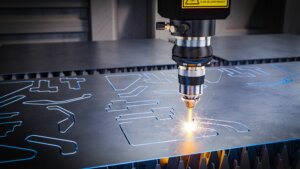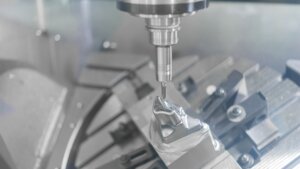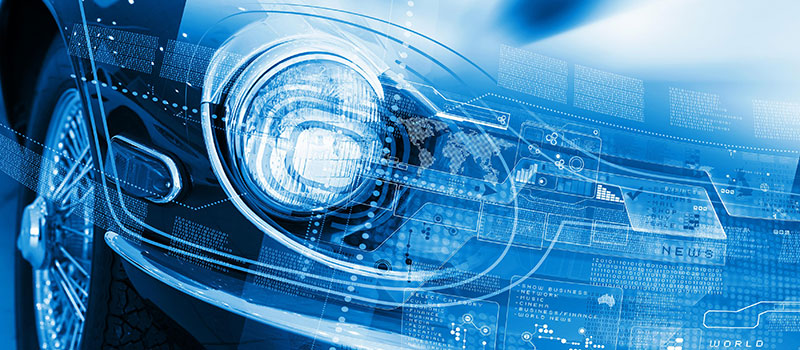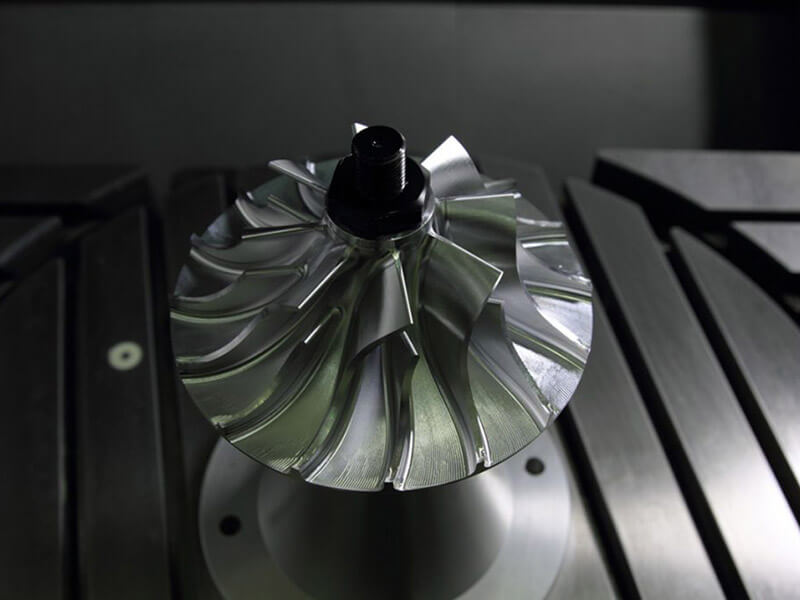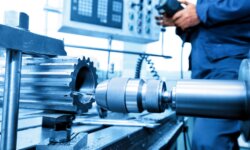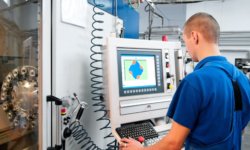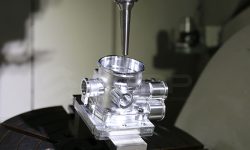In the sprawling arena of manufacturing and engineering, one technology that is rewriting the rules is 3-axis machining. But what exactly is this wonder of modern engineering? Dive in as we unravel the intricacies of this innovative technology.
What is 3-Axis Machining?
Fundamentally, 3-axis machining is a multi-axis machining process that involves the coordinated movement of a machine’s cutting tool or a workpiece along three distinct axes simultaneously. This simultaneous operation along the x-axis, y-axis, and z-axis underpins the principle of this machining process.
When employed in CNC machining, this ensures high precision in material removal, leading to the creation of accurately detailed and intricate mechanical components.
Understanding the 3-Axis Machining Process
This section delves into the complex but fascinating process of 3-axis machining.
The Movement and Rotation of Cutting Tools
In 3-axis machining, the cutting tool moves along the three axes – X, Y, and Z.
The X and Y axes represent the horizontal plane, while the Z axis signifies vertical movement.
The combined motion in these three axes allows the CNC machine to accurately and efficiently remove material from the workpiece, giving it a desired shape.
The Role of CNC Machines in 3-Axis Machining
CNC machines play an essential role in 3-axis machining. These machines, equipped with automated cutting tools, are capable of executing complex machining operations with high accuracy and speed.
Additionally, the CNC milling machine’s spindle’s rotation enhances the cutting tool’s ability to create precise geometric shapes.
The Precision of the Milling Machine
A key component of the 3-axis machining process is the milling machine. It is this machine’s extraordinary precision and range of movement that enable it to craft complex geometries from raw materials. The greater accuracy of these machines ensures that even the most intricate mechanical components can be machined to exact specifications.
Machines Used in 3-Axis Machining
When it comes to 3-axis machining, the kind of CNC machine used is critical. For instance, a 3-axis CNC machine is ideal for tasks that involve material removal in three planes.
- 3-Axis CNC Milling Machines: These machines typically move in the X, Y, and Z linear axes and also include a table that rotates in the A, B, or C axis, but it only counts as three axes because there are only three directions of cutting possible at one time. They’re primarily used for rectangular parts and will handle the majority of CNC machining jobs.
- 3-Axis CNC Machining Centers: A 3-axis CNC machining center is a mill, but with additional features and capabilities. These machines have the ability to perform various functions apart from just milling, including drilling and tapping. They offer more versatility in machining complex parts.
- 3-Axis CNC Lathes: CNC lathes with live tooling have capabilities of 3-axis machining. They can produce cylindrical parts very efficiently, with the spindle rotating the part in a circular motion while the cutting tools approach and shape the part in linear motions.
- 3-Axis CNC Routers: These are predominantly used in the woodworking industry, particularly for intricate designs in furniture making. A CNC router is also capable of cutting and shaping materials such as plastic, foam, and softer metals.
- 3-Axis CNC Engraving Machines: These machines are utilized to engrave or carve designs onto surfaces. Their 3-axis movement is ideally suited for detailed and precise engraving work.
- 3-Axis CNC Plasma Cutters: While a plasma cutter may not offer the same level of precision as a milling machine or lathe, it is proficient in cutting through thick materials swiftly. In a 3-axis setup, the cutting tool can move up, down, left, right, and forward and backward, making it suitable for slicing through flat sheets of metal.
On the other hand, a 5-axis CNC machine offers even more capabilities, including the ability to rotate the cutting tool or workpiece around additional axes (the A and B axes), thereby enabling machining of more complex parts.
Applications of 3-Axis Machining
3-axis machining’s exceptional accuracy and versatility make it suitable for a wide array of applications. Industries ranging from automotive to aerospace, from medical to energy, employ 3-axis machining to produce complex parts.
- Automotive Industry: 3-axis CNC machines are used for manufacturing various automotive parts, such as engine components, gearboxes, and various custom parts.
- Aerospace Industry: High precision is crucial in the aerospace industry. The 3-axis machining process is used to manufacture components such as turbine parts, instrument panels, and airfoils.
- Medical Industry: 3-axis machines are used for creating highly precise and custom components for medical equipment and devices, such as orthopedic implants and surgical instruments.
- Electronics Industry: The manufacture of electronic components like motherboards, semiconductors, and enclosures often involves the use of 3-axis CNC machines due to their precision and repeatability.
- Mold and Die Making: The 3-axis machining process is heavily used in mold and die-making industries, primarily due to its precision and the complexity of the parts it can produce.
- Construction Industry: 3-axis CNC machines are used in the production of various construction equipment and custom parts, including gears, hydraulic components, and more.
- Jewelry Industry: For intricate designs and high-quality finishes, the jewelry industry often employs 3-axis CNC machines.
- Woodworking: 3-axis CNC routers are extensively used for intricate carving, shaping, and cutting in the furniture and woodworking industry.
Additionally, the technology is also extensively used for drilling, milling, and tapping operations. It’s worth noting that 3-axis machining’s advantages may not always outweigh its cost and setup time, depending on the application’s complexity.
Benefits of 3-Axis Machining
The benefits of 3-axis machining are manifold. Here are a few that stand out:
- Greater Accuracy: Thanks to the CNC machines’ precision and the ability to move along three axes, 3-axis machining ensures highly accurate and quality results.
- Versatility: 3-axis machining is adept at handling a wide range of materials and geometries. This versatility makes it ideal for various industries and applications.
- Automation: With the CNC machine in charge, 3-axis machining minimizes the need for manual intervention. This level of automation boosts productivity and reduces the margin for error.
- Efficiency: 3-axis machining optimizes the use of resources and energy which contributes to enhanced efficiency in manufacturing processes.
Drawbacks of 3-Axis Machining
While 3-axis machining offers numerous advantages, it is not without its limitations:
- Limitations in Complexity: Although 3-axis machining is capable of creating intricate parts, there are limits to the complexity it can achieve. Complex geometries that require five-axis machining are beyond its scope.
- Increased Setup Time: Depending on the complexity of the part to be machined, setting up a 3-axis machine can be time-consuming. This might delay production, impacting efficiency and output.
- Cost: 3-axis machines, particularly CNC machines, can be expensive. The cost of acquiring, maintaining, and operating these machines may not be justified unless they are frequently used or required for complex projects.
3-Axis Machining vs. 5-Axis Machining
The main difference between 3-axis and 5-axis machining lies in the number of directions in which the cutting tool or workpiece can move. In 3-axis machining, movement is limited to the X, Y, and Z axes.
On the other hand, in 5-axis machining, two additional axes, typically referred to as the A and B axes, allow for rotations around the X and Y axes, respectively. This greater movement capability allows for more complex shapes and geometries to be machined, and for parts with undercuts or pockets to be processed in a single setup.
However, this comes at a cost. 5-axis CNC machines are significantly more expensive than 3-axis CNC machines. Additionally, they may require more extensive operator training, which can increase the overall operational costs.
Conclusion
3-axis machining stands as an impressive testament to technological innovation in the field of manufacturing and engineering. Its capabilities in producing precise, high-quality mechanical components have made it a go-to resource for various industries. Yet, like all technologies, it comes with its limitations, mainly when tasked with complex geometries or higher processing requirements.
While its benefits are manifold, it’s important to weigh these against its cost and setup time, particularly when considering more complex tasks that might be better suited to 5-axis machining. With a clear understanding of what 3-axis machining offers and its limitations, manufacturers can make informed decisions about which process best suits their needs.
We hope this article has provided you with a thorough understanding of 3-axis machining. For more in-depth knowledge and insights into the world of machining, subscribe to our content, or feel free to visit us to learn more about our wide range of machining solutions and services.



